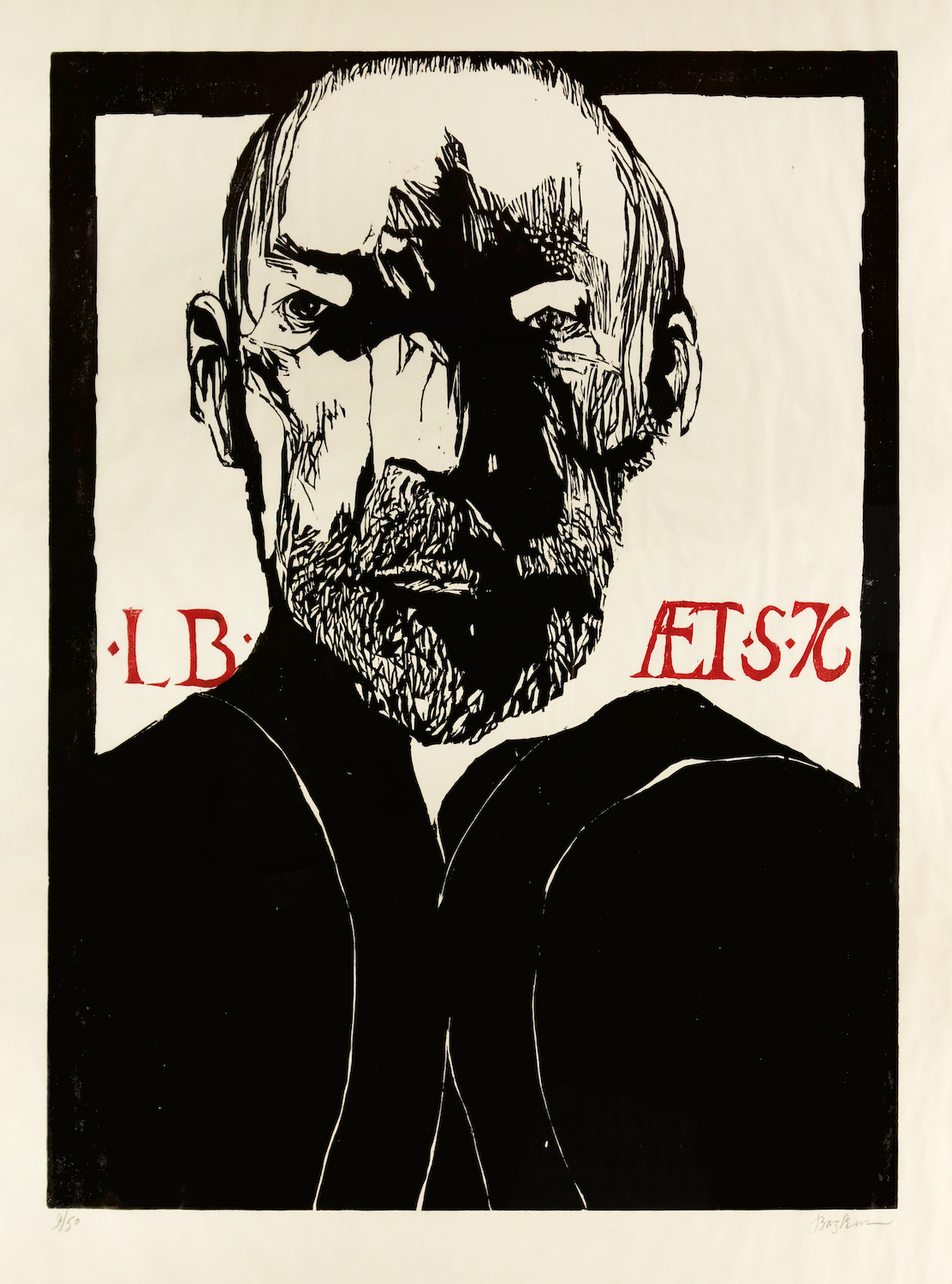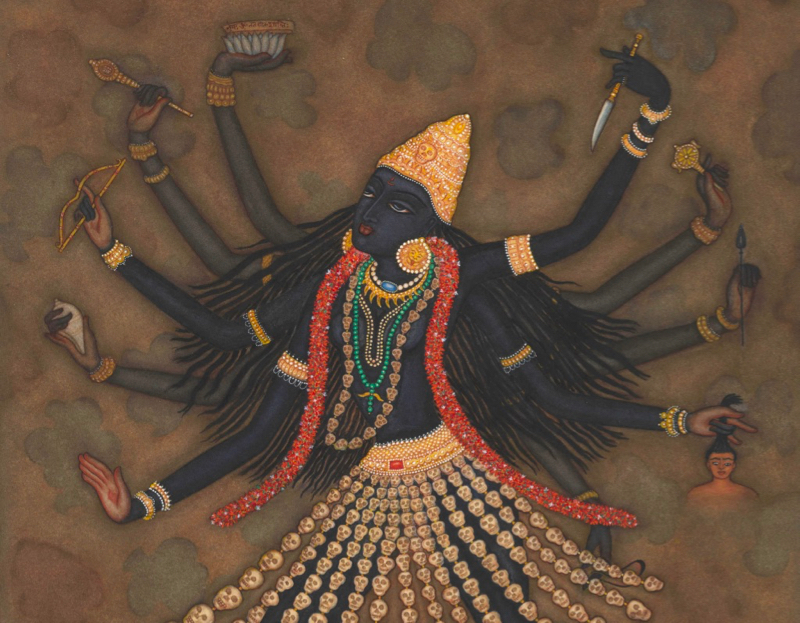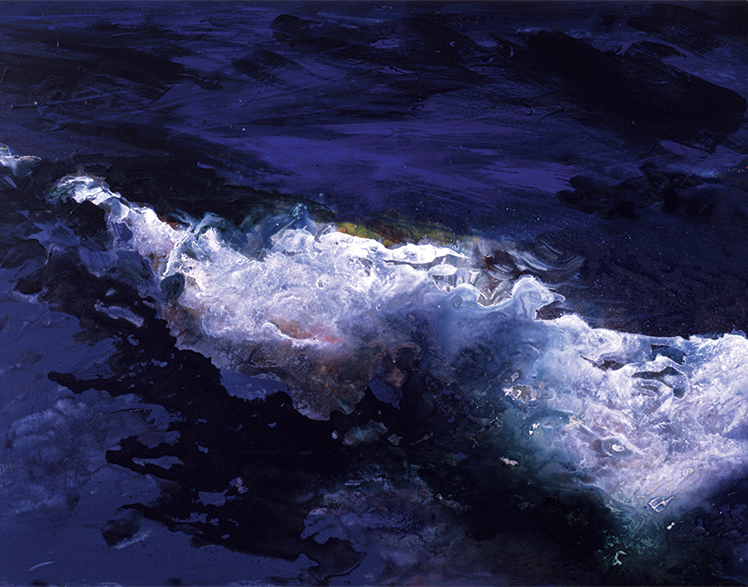
A selection of Leonard Baskin’s most powerful graphic work, monumental of format and bitterly elegiac in content, currently inhabits the Crosman Gallery in the Farnsworth Art Museum in Rockland, Maine. The exhibition includes eighteen pieces, mostly the large woodcuts Baskin produced that depict life-size figures: ravaged men, man-bird hybrids, or phantasmagorical ogres, symbols of death. The preference for symbolism and the abstraction of horrific themes are essential to Baskin’s intent, yet this also imposes an intellectual remove when compared to poet laureates of outrage like Goya and Kollwitz. Baskin’s proclamations on the human condition aren’t bound by specifics, nor do they refer to individuals. Notwithstanding the inclusion of Yiddish script, the late woodcuts in which he took on the subject of the Holocaust could be transferred to current events. The beastly apparition of The Specially Ordained Slaughterer for Children could refer to Uvalde, Texas, or Putin’s indiscriminate bombing of civilian targets in Ukraine. The universality of evil was Baskin’s bête noire.
The sustained force of Baskin’s righteous indignation must have been rooted in a formal religious upbringing. The son of an orthodox rabbi, he was born in New Brunswick, New Jersey, in 1922. The family moved to Brooklyn, where Baskin attended school in what he would later call a “dark, medieval” yeshiva. By the age of fifteen he turned his attention to sculpture, and was apprenticed to a professional. Studies at NYU, Yale, and the New School followed. While at Yale, Baskin founded the Gehenna Press, one of the first fine art publishers in the country. (Baskin later said, “I lost money for 40 years on that.”) He served in the Navy during World War II, and in the early 1950s continued his studies in Paris and Florence. In the 1970s, Baskin lived for a time in England to collaborate on books with the poet Ted Hughes; Hughes was inspired by the sight of Baskin’s pen drawings of crows and man-bird hybrids. Hughes’s wife, Sylvia Plath, dedicated the poem “Sculptor” to him. Baskin’s sculpture graces the Franklin Delano Roosevelt Memorial in Washington D.C. and the Holocaust Memorial in Ann Arbor. Baskin taught for many years, primarily at Smith College and Hampshire College.

Baskin preferred printmaking to painting, for what he described as “an immediacy of purpose that often is alien to the slower more contemplative medium of painting. Or to give wider circulation to an attitude, a feeling, a position that the inescapable singleness of a painting is incapable of.” By the mid-1950s, he had created a number of large-scale woodcuts. The process is explained in wall notes accompanying the exhibition: “Baskin’s early blocks were cheap pine, some of them cut on wood salvaged from old doors.”
Baskin would later use wood of higher quality. Though he was often assisted by students, he was, in effect, the master draftsman, and did all the cutting himself. Ink was then applied with a brayer, and the paper was placed upon the block and rubbed with a wood spoon. For the large woodcuts, Baskin switched from printing manually to using a press only in the 1990s.
The early woodcuts—Man of Peace, The Hanged Man, and Hydrogen Man—are extraordinary works of conscience, their bite sharpened by Baskin’s technical expertise. In each, the figures are constructed—in the case of Hydrogen Man, deconstructed—with a network of finely wrought lines suggestive of sinews, veins, and viscera. Man of Peace is the earliest work in the show, its ambiguity and unease an apt introduction to the themes that follow. A man stands before us, bare legs powerfully etched, and holds high a chicken. A mesh of barbed wire separates him from the viewer, evoking concentration camps. The fowl he offers is dead. In the ensuing woodcuts, Baskin’s meaning is less elliptical. The Hanged Man depicts a haunting and beautifully rendered body, dangling limply, redolent of the lynchings perpetrated against Blacks in this country as well as the systematic murders of the Second World War. The figure is at once semi-transparent and sculptural in effect, a reminder of the sensitivity of line that often characterizes the drawing of sculptors. Hydrogen Man is the least realistic of Baskin’s early triumvirate of large woodcut figures, and the one that directly confronts the horrors made possible by modern technology. It was created in 1954, after the detonation of the Castle Bravo bomb at Bikini Atoll. Nuclear fallout on the Marshall Islands was higher than anticipated, leading to locally acute radiation sickness and worldwide distribution of radioactive particles. As if suffering the aftermath, the skin of Hydrogen Man is flayed from his face, a leg all but detached from his pelvis. Though he stands to face us, he’s irrevocably disfigured, the whorl of veins that comprise his figure a violent rhythm of carnal distress.

Several woodcuts bridge the gap between the 1950s and the 1998 Holocaust series. Angel of Death of 1959 fills the sheet with a feathered man-bird. Great Bird Man (c. 1963) still features the intricate linear network of the earlier woodcuts, while introducing the symbolism of a body swollen with destruction. A later sculpture, Glutted Death with Wings, makes the metaphor more explicit. The conflation of man and bird, meant to emphasize our bestial nature, repudiates a history of romantic imagery, of female models adorned with angelic wings. In a 1982 woodcut, Tyrannus, avian references are jettisoned, leaving a naked, metallic-skinned colossus.
“It took me 50 years to deal with the Holocaust at all,” Baskin said in 1996. The series is populated by otherworldly messengers of destruction, bloated death dealers, skeletons, and crows. They are enhanced by hyperbolic titles: The Specially Ordained Slaughterer for Children; Well Death, Have You Devoured Enough of Our Children; We Lie Here Dead and His Godly Name Grows Greater and Holier; At Least Death Loves the Jews. Baskin dramatized the catastrophe of a people forsaken not only by the world, but, in his eyes, by the Creator. “For the proverbs,” he explained, “the apothegms to allow me into the vast hideousness of the Holocaust, they need to be bitter beyond bile, sarcastic out of measure, they must be ghastly, terrible, thus help carry the meaning of the large prints. The woodcuts make but a faint stab at the appalling actuality of the Holocaust, but they have granted me a gesture to somehow deal with the crashing reality of the Holocaust.” In lieu of the actuality, Baskin constructed a visual mythology.
Perhaps the subject is too vast and horrible to be done justice, even by a master of great ambitions. Baskin’s vernacular had changed; where once the woodcuts struck with surgical precision, the late work shows the broad facility of an experienced illustrator. I suppose I’m making the case for terseness as a more effective means of illustrating incomprehensible evil. I wish the Baskin of the 1950s, of The Hanged Man and Hydrogen Man, had broached the subject.
That’s probably a myopic desire, one that overlooks the place Baskin’s mature work—filled with metaphor and elegantly designed—occupies in American art. His Holocaust series constitutes an uneasy reckoning, particularly given the implications of the slogans, with their provocative mixture of martyrdom and angry atheism. They suggest that even late in life, Baskin struggled with accounting for the genocide while questioning the existence of God. In this he was not alone, especially among first generation American Jews. Baskin addressed the Holocaust late in life and more than fifty years after the war, but when he finally confronted the theme, he did so with ferocity.
Installed with the Holocaust series is Keening Woman, a bronze sculpture from 1978. A woman stands, head bowed and body bent forward in grief. Her presence introduces a note of compassion, and her pathos holds its own with silent eloquence amid the maelstrom.
Leonard Baskin: I Hold the Cracked Mirror Up to Man is on view at the Farnsworth Art Museum in Rockland, Maine, through January 15, 2023.




